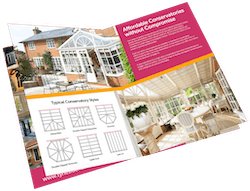Condensation in windows is a common problem that affects many homeowners across the North East, particularly during the colder winter months.
Those droplets of liquid forming on your window glass aren’t just unsightly – they can indicate underlying issues with humidity levels, air circulation, or even your windows themselves.
Understanding why window condensation occurs and how to prevent it can help you maintain a comfortable, healthy home whilst protecting your property from potential structural damage. Below, we’ll cover:
- The causes of condensation in windows
- How to prevent condensation
- When is window replacement is the best option?
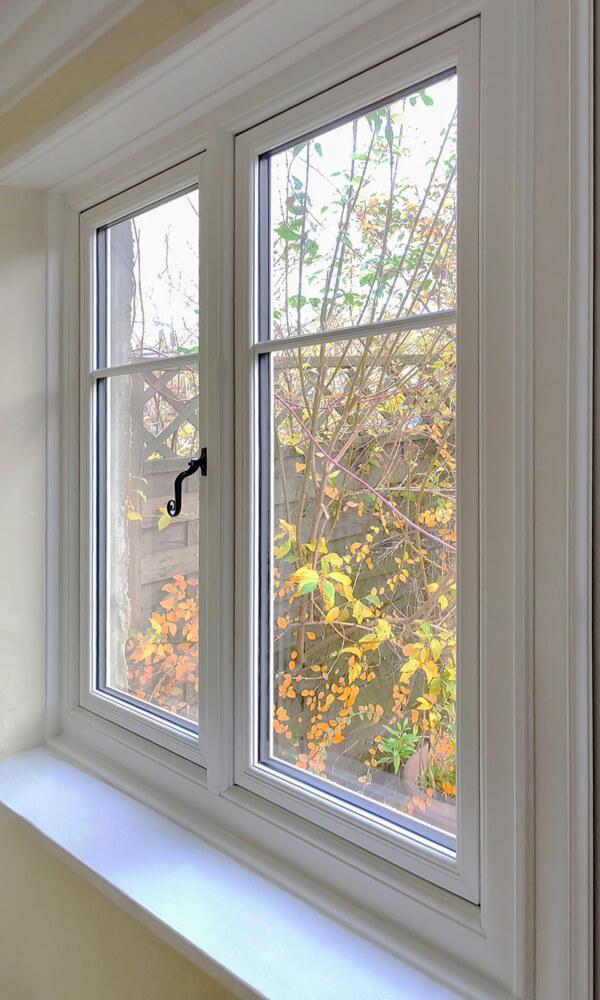
What causes condensation on windows?
Window condensation forms when warm air meets a cold surface, causing water vapor to turn into water droplets. This happens because warm air holds more moisture than cold air, and when that moist air comes into contact with cold glass, it reaches its dew point and condensation appears.
Condensation on the outside of the window
External condensation typically occurs early in the morning when outside air temperatures are cooler than the window glass. This type of condensation is actually a good sign – it indicates your windows are energy efficient and preventing heat from escaping your home.
The temperature difference between the warm inside air and cold external air creates this effect on the outer surface.
Condensation on the inside of the window
Indoor condensation is more concerning. When humid air inside your home meets cold window panes, moisture levels become visible as droplets on the inside of the window. This common problem often occurs in areas with poor air circulation, such as bedroom windows, or rooms with high humidity like kitchens and bathrooms.
Condensation between glass panes
The most serious type of condensation occurs between the panes of glass in double glazing. This indicates that the window seal has failed, allowing moisture to enter the space between the glass. When this happens, the whole window’s energy efficiency is compromised, and replacement is typically the best way forward.
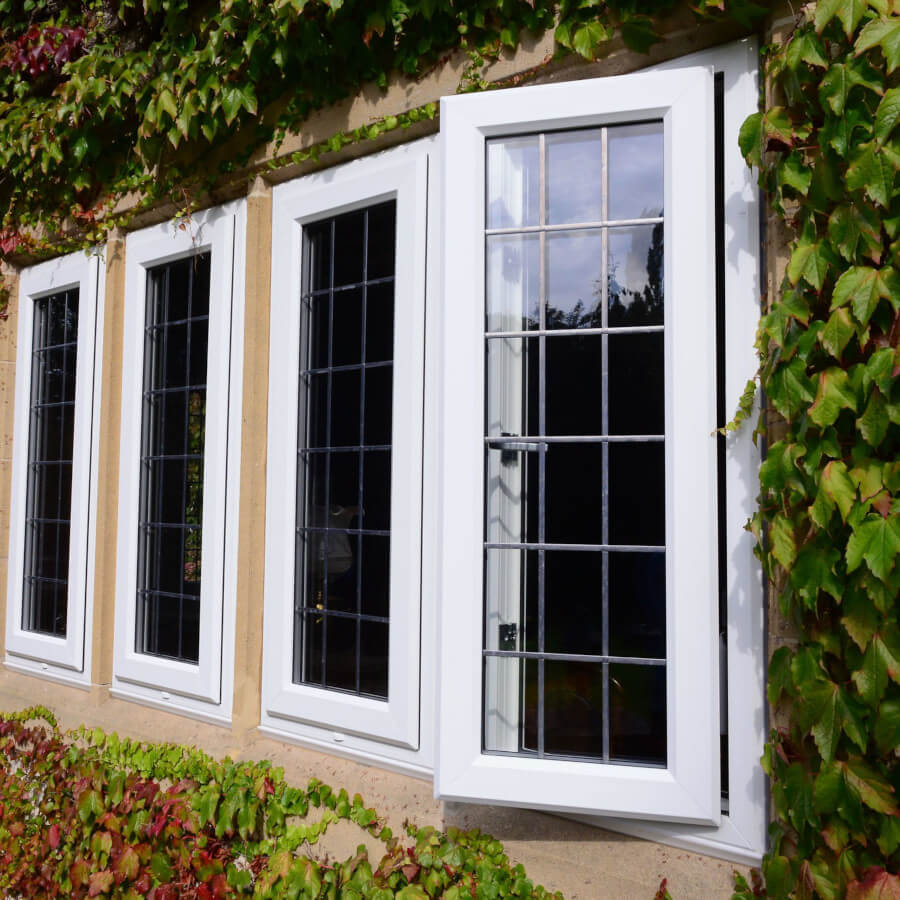
Understanding the root causes of window condensation
Several factors contribute to excessive moisture and window condensation.
High indoor humidity:
Activities like cooking, showering, and drying clothes indoors increase humidity levels. Without proper ventilation, this humid air has nowhere to go.
Poor air circulation:
Inadequate ventilation means moist air becomes trapped, leading to condensation when it meets cold surfaces like window glass.
Temperature differences:
The greater the difference between inside air and outside temperatures, the more likely condensation forms on cold glass surfaces.
Old windows:
Older window frames and single glazing are more prone to condensation due to poor thermal performance and air leakage.
Lifestyle factors:
Large families, pets, and certain activities naturally increase the amount of moisture in your home’s air.
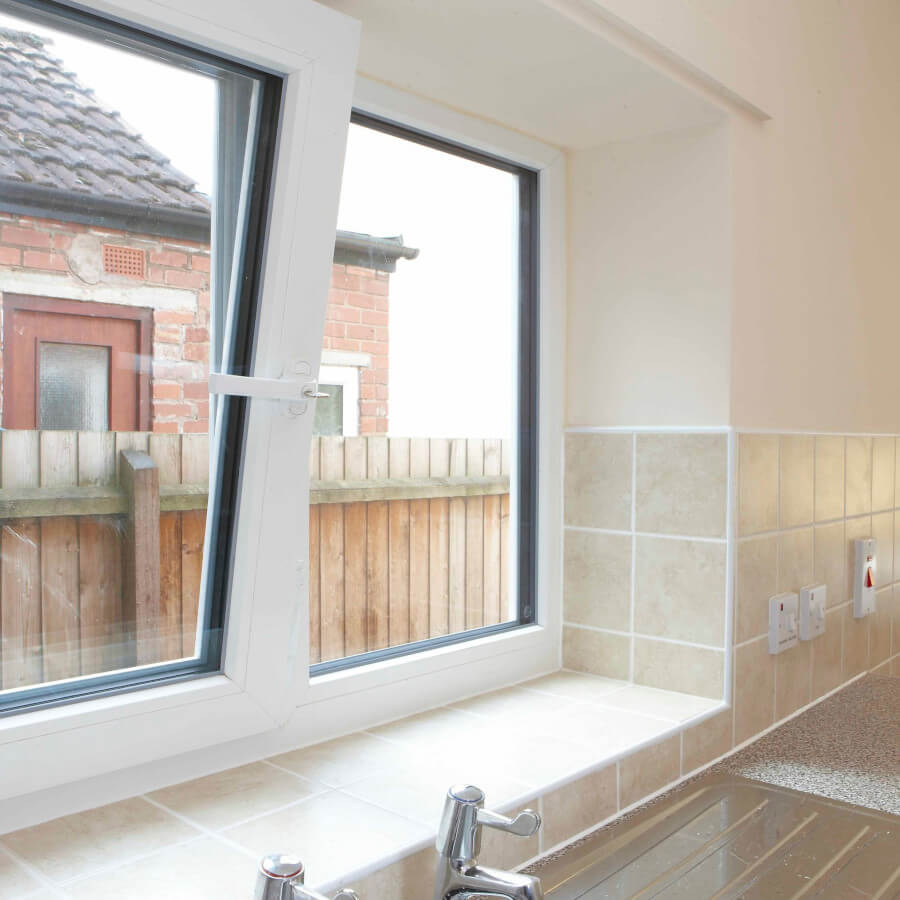
How can I prevent condensation in windows?
Preventing condensation on your windows usually involves improving ventilation by opening windows regularly, using extractor fans and opening install trickle vents. It’s also important to control humidity levels indoors and maintain consistent heading to reduce temperature differences between inside air and cold glass surfaces.
We’ll discuss these ideas in more detail below.
Improve ventilation
The best way to reduce condensation is improving air circulation throughout your home.
- Install trickle vents in window frames to allow controlled airflow
- Use extractor fans in bathrooms and kitchens
- Open windows regularly, even briefly during winter months
- Keep kitchen doors closed when cooking to prevent humid air spreading
- Ensure exhaust fans are working effectively
Control humidity levels
Managing indoor humidity is crucial for less condensation.
- Use dehumidifiers in problem areas
- Avoid drying clothes indoors without proper ventilation
- Cover pans when cooking
- Fix any leaks that contribute to excess moisture
- Maintain relative humidity between 30-50%
Improve heating and insulation
Consistent heating reduces the temperature difference that causes condensation.
- Maintain steady indoor temperatures
- Avoid dramatic temperature changes
- Consider upgrading insulation around window frames
- Use curtains and blinds appropriately to allow air circulation
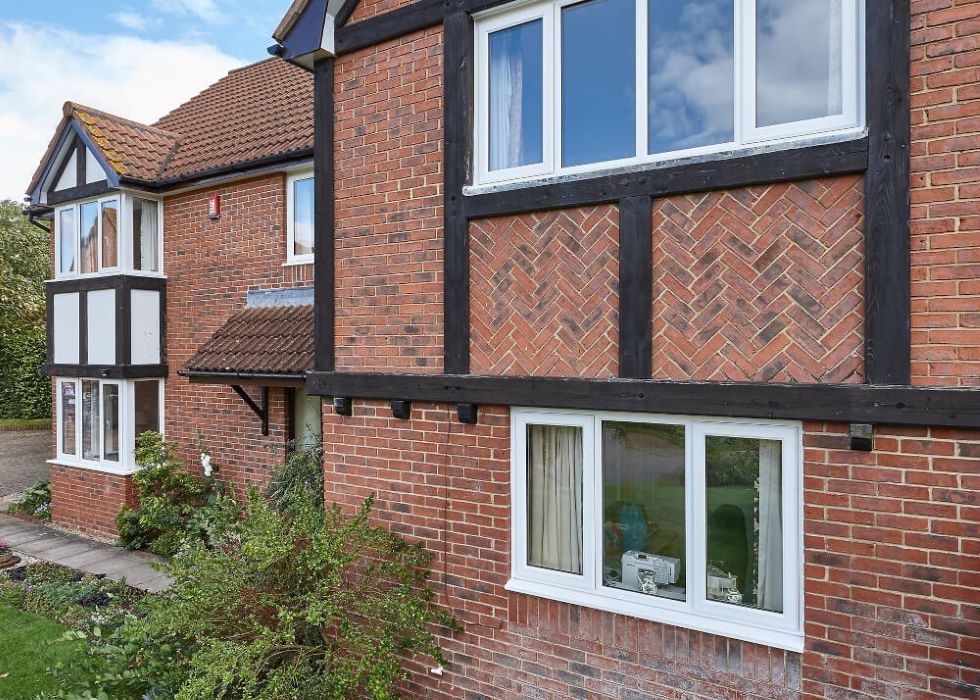
When is window replacement the best solution?
If you have been unable to prevent condensation on your windows, it might be time to consider replacement windows. If you have old windows that consistently suffer from excessive moisture despite good ventilation, new windows will provide better thermal performance and reduce condensation issues.
Window replacement becomes the best solution when condensation appears between the panes of glass in double glazing, indicating failed seals that compromise your windows’ energy efficiency.
When your energy bills remain high due to poor window performance, or when window frames show signs of rot or structural damage from persistent moisture problems, replacement offers a long-term solution.
Our range of energy-efficient windows
At Tyneside Home Improvements, we offer three excellent window materials to combat condensation and improve energy efficiency.
- A-rated energy efficiency as standard
- Thermally-efficient multi-chambered frames
- Low maintenance requirements
- Cost-effective pricing
- Available with trickle vents for improved air circulation
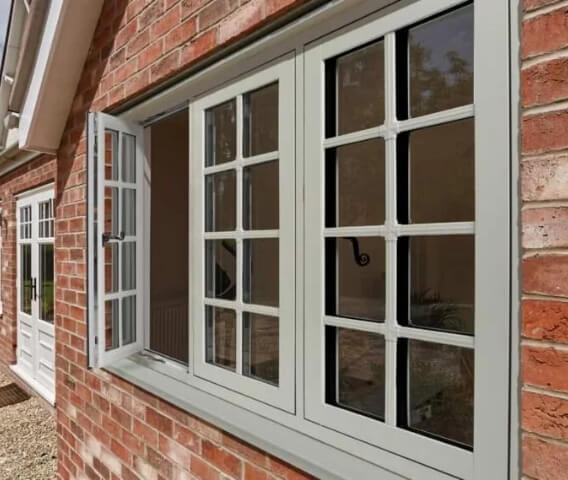
- A sleek, modern solution
- Thermal break technology prevents heat transfer
- Slim frames maximise natural light
- High-performance glazing options
- A-rated energy performance as standard
- Exceptional durability lasting up to 45 years
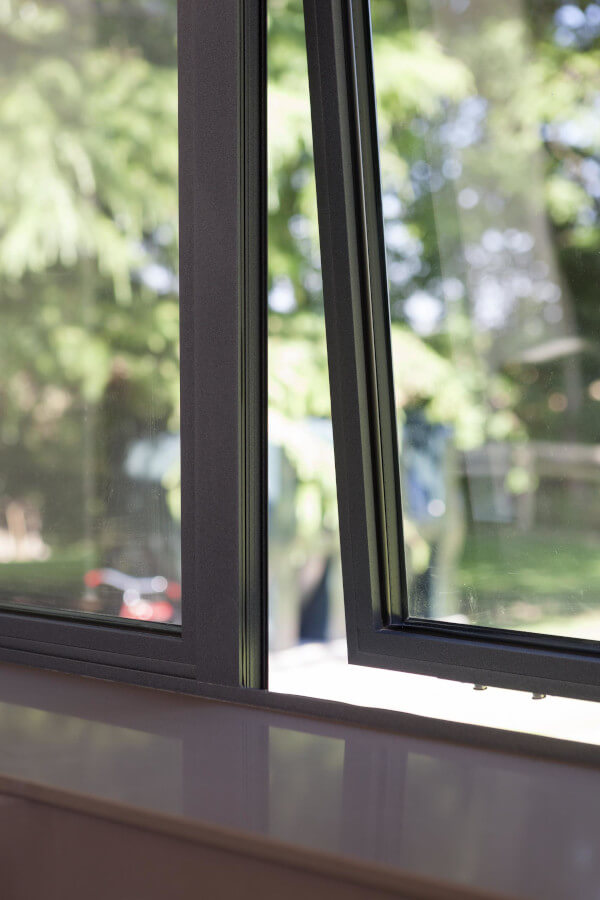
- Perfect for period properties
- Authentic timber appearance
- Modern energy efficiency
- Low maintenance unlike traditional wood
- Suitable for conservation areas
- Available in various woodgrain finishes
All our windows come with high-performance double glazing and can accommodate triple glazing where required. The improved insulation significantly reduces the likelihood of condensation whilst cutting your energy bills.
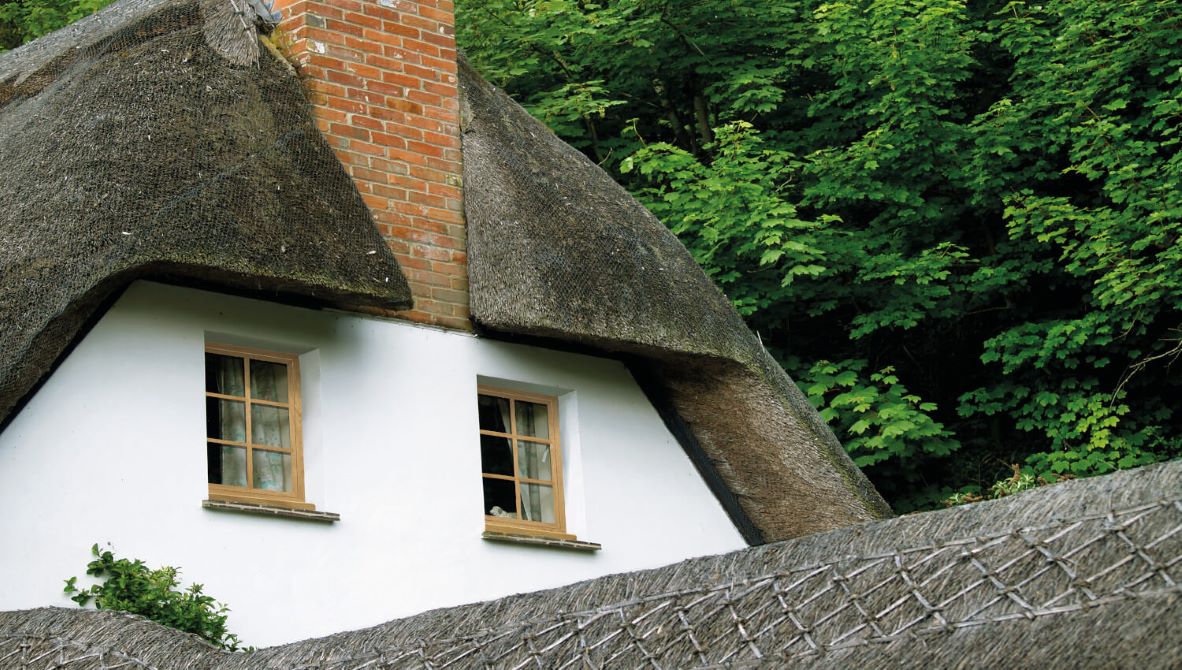
Why choose Tyneside Home Improvements?
With over 17 years of experience serving the North East, we understand the specific challenges local weather conditions present. Our family-run business combines expert installation across the North East with high-quality products designed for UK weather conditions.
For your peace of mind, we offer guarantees on all products, and our team is happy to provide professional advice on ventilation and condensation solutions.
Take action against window condensation: contact Tyneside today
Don’t let window condensation compromise your home’s comfort and energy efficiency. Whether you need advice on improving ventilation or are considering new windows to solve persistent moisture problems, our expert team can help you find the right solution.
Ready to eliminate condensation issues for good?
Contact Tyneside Home Improvements today for your free, no-obligation quote. Call us on 0191 489 5063 or complete our online contact form to discuss your home improvement plans.

